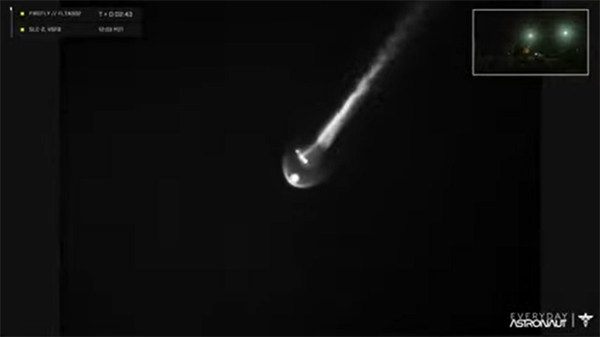
Space launches tend to be binary in nature: they either work as designed, known in the industry by the unrevealing term nominal; or they crash spectacularly. To succeed or not to succeed, that is the question. Most of the time.
Firefly Aerospace’s first launch in September 2021 was the latter, with its Alpha rocket exploding in a giant fireball shortly after liftoff from Vandenberg Space Force Base due to the failure of a first stage engines. Firefly’s second Alpha launch earlier this month has been a bit more difficult to categorize. It all depends upon how one defines success.
Alpha reached orbit, deployed its three small payloads, and Firefly declared “100 percent mission success” on the criticial flight test. Celebrations and champagne all around. Vindication! Validation! Victory!
But, the tracking data told a slightly different story. It showed the payloads were deposited in an elliptical orbit. Several of them ended up decaying into the atmosphere within days. The second stage was supposed to fire to circularize the orbit to give the payloads more time to operate. But, it never did.
As a result, there are observers saying the flight falls into a middle category of partial failure. Wikipedia has categorized it as such on its 2022 in Spaceflight page. It is the only partial failure among 140 orbital launch attempts this year. The worldwide launch record stands at 134-5-1.
Firefly has continued to call the launch an unqualified success. However, the burn to circularize the orbit was listed in the pre-launch media guide as an objective of the test, with no indication that it was an optional part of the flight plan. It’s easy to understand the skeptics’ point of view.
From an engineering perspective, how outsiders categorize the flight matters less than the data it returned. “This is why we test,” the old adage goes. You conduct flight tests to find the flaws so they don’t reoccur once the rocket begins launching really valuable payloads.
The flaw on the first Alpha flight doomed the booster to a watery grave. The second test revealed a problem in the upper stage, which doomed payloads to an early fiery grave. So, flight number two a success even though some of the payloads reentered earlier than planned.
From a business standpoint, how the mission is categorized matters a lot more. Firefly faces tough competition in the lower end of the launch market. Playing up the success of the launch presumably the company in its search for payloads and investment.
In the end, the flight was what it was. We’ll see how successful the flight tests were in identifying flaws — and the engineers were in addressing them — when Firefly launches its third Alpha rocket.

